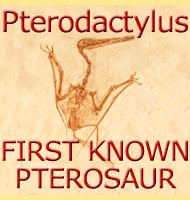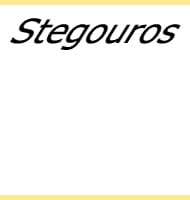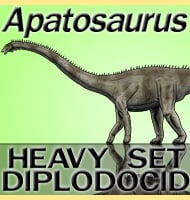In Depth
The almost complete specimen of Monolophosaurus was first discovered in 1984. This exciting find was initially named ‘Jiangjunmiaosaurus’ after Jiangjunmiao, an abandoned inn near where the skeleton was found, but it was never an official name hence the lack of italics and its description as a nomen nudum (a name that is not required). The actual name did not come until after the fossils had been properly prepared for study when the name Monolophosaurus was finally chosen, a reference to the crest on its head.
Monolophosaurus is instantly recognisable by the single crest that runs down the centre of its skull from the eyes to the end of snout. Because this crest is hollow there has been past speculation that it may have been a resonating chamber to amplify sounds. The reality however is that the hollow construction of the crest was merely a weight saving feature so that the crest did not become so heavy that Monolophosaurus would have difficulties moving the head. Monolophosaurus is not the only crested theropod dinosaur of the Jurassic, and a study by T. Carr in 2006 raised the question of if the proceratosauroid genus Guanlong was actually represented by juvenile Monolophosaurus, though today both of these genera are still widely treated as being distinct from one another.
Monolophosaurus is classed as a tetanuran, or ‘stiff tailed’ theropod which means that the tail was kept straight by a series of tendons and carried off the ground like in most well-known theropods such as Tyrannosaurus and Allosaurus rather than being dragged limply along the ground. Monolophosaurus however has been speculated to be one of the most primitive of tetanurans as well as a member of the neo-tetanura depending upon the views of differing palaeontologists. Out of all the known Jurassic era theropods, Monolophosaurus is thought to be most closely related to Chuandongocoelurus, a view reinforced by a study by Benson et al in 2010.
Further Reading
– A large crested theropod from the Jurassic of Xinjiang, People’s Republic of China. – Canadian Journal of Earth Sciences 30: 2027–2036. – Xi-Jin Zhao & Philip J. Currie – 1993. – Is Guanlong a tyrannosauroid or a subadult Monolophosaurus? – Journal of Vertebrate Paleontology 26:48A. – T. Carr – 2006. – The skull of Monolophosaurus jiangi (Dinosauria: Theropoda) and its implications for early theropod phylogeny and evolution. – Zoological Journal of the Linnean Society 158: 573–607 – Stephen L. Brusatte, Roger B. J. Benson, Philip J. Currie, Xijin Zhao – 2010. – The postcranial skeleton of Monolophosaurus jiangi (Dinosauria: Theropoda) from the Middle Jurassic of Xinjiang, China, and a review of Middle Jurassic Chinese theropods. – Geological Magazine 147 (1): 13–27. – Xijin Zhao, Roger B. J. Benson, Stephen L. Brusatte & Philip J. Currie – 2010.










